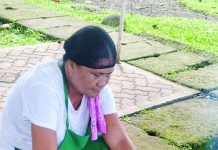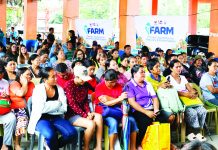TACLOBAN CITY– The municipality of Daram, Samar, home to the largest municipal waters and longest coastline in the Samar Sea, is ramping up efforts to combat post-harvest fish losses through a comprehensive five-year development plan amounting to P249.8 million.
The initiative, backed by key stakeholders, aims to reduce fish spoilage, improve storage facilities, and enhance fisherfolk livelihoods.
During a stakeholders’ forum in the town held on February 13, Vice Mayor Lucia Astorga underscored the significance of addressing the high rate of post-harvest fish loss, which currently stands at 40.34%, according to a study conducted by the Center for Sustainable Aquaculture and Agri-based Innovations (CenSAAI) in 2024.
Post-harvest fish loss (PHFL) refers to the measurable reduction in the quantity, quality, or monetary value of fish, after the fish is caught and before it is sold to consumers.
“Our seas have long been the lifeblood of our people, yet many of our fisherfolk suffer due to inadequate preservation, lack of proper storage, and limited market access. By working together, we can reduce these losses, increase incomes, and ensure food security,” Astorga said.
“Reducing post-harvest losses is not just about economics; it’s about securing the future of our coastal communities. Through sustainable solutions, we can uplift the lives of our fisherfolk and create a more resilient fishing industry,” she concluded.
The forum gathered representatives from Oceana, the Department of Agriculture-Bureau of Fisheries and Aquatic Resources (DA-BFAR), the Department of Trade and Industry (DTI), Samar State University, and fisherfolk leaders, among others.
BFAR Region 8 Regional Director Dominador Maputol affirmed the agency’s commitment to supporting post-harvest infrastructure projects, including the construction of cold storage facilities, fish landing centers, and processing plants. “We are integrating conservation efforts with livelihood programs to ensure a sustainable fishing industry in Samar,” he said.
Gloria Estenzo Ramos, Oceana vice president, highlighted the role of sustainable fisheries governance and vessel monitoring systems in ensuring responsible fishing practices.
“Daram can serve as a model for science-based fisheries management. By enhancing fisherfolk training and strengthening policy frameworks, we can create long-term solutions,” Ramos added.
Oceana recommends the following policies to reduce post-harvest fish losses: establish robust fish catch monitoring and reporting systems; ensure accurate data on fish catch; train women and mobile peddlers in postharvest handling and processing to minimize quality loss; limit catch volumes of species with high PHFL during peak fishing seasons to reduce physical and market force loss; establish an organized marketing system to connect fishers and aquafarmers with buyers, enhancing market linkages in the fish distribution chain; and implement area- and species-specific price regulating mechanisms to control fish prices and ensure fair profits for fishers and aquafarmers, among others.
The municipality’s five-year Comprehensive PHL reduction plan proposes the establishment of cold storage units, drying facilities, fish processing centers, and skills training programs to curb losses and maximize fish value.
Stakeholders proposed solutions such as seasonal fishing quotas, expansion of market reach, and value-added fish processing to absorb the surplus supply.
The Alliance of LGUs along Samar Bays and Channels also pledged to collaborate on resolving the issue by improving market coordination and exploring inter-provincial trading partnerships.
Additionally, Daram’s Fisheries Office committed to enhancing its electronic fish catch monitoring system, ensuring transparency in daily landings.
(JOEY A. GABIETA)



